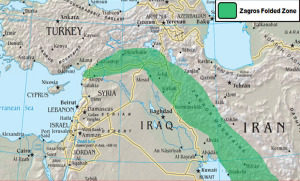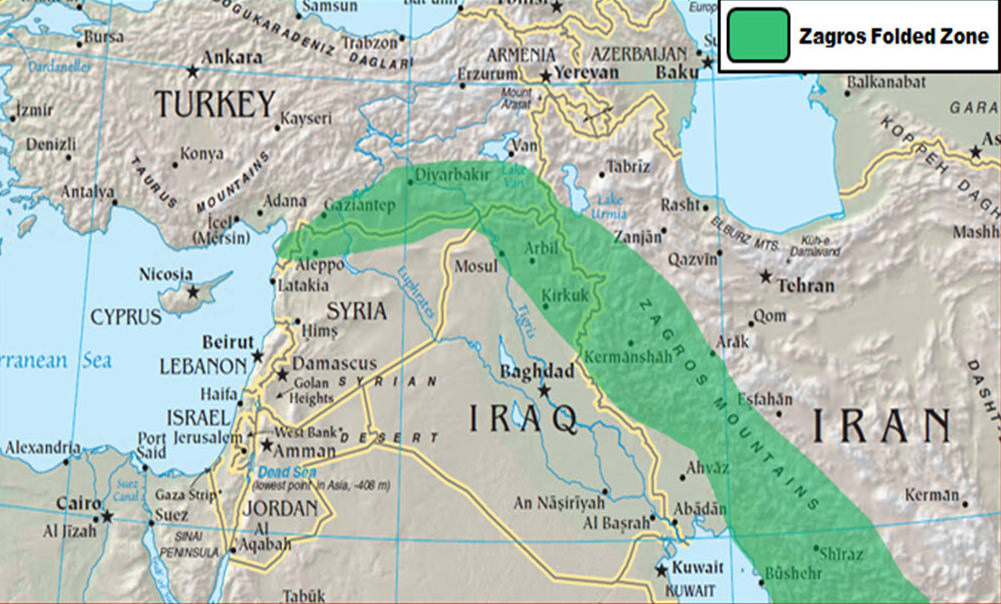
The transition from hunter-gatherer to sedentary farming 10,000 years ago occurred in multiple neighbouring but genetically distinct populations according to research by an international team including UCL.
“It had been widely assumed that these first farmers were from a single, genetically homogeneous population. However, we’ve found that there were deep genetic differences in these early farming populations, indicating very distinct ancestries,” said corresponding author Dr Garrett Hellenthal, UCL Genetics.
Farnaz Broushaki and colleagues sequenced the DNA from four skeletons representing early Neolithic human remains from Iran’s Zagros region, the site of some of the oldest evidence for farming to date. The researchers’ genetic analyses* uncovered a previously uncharacterized population – one highly distinct from ancient Neolithic Anatolians, the population often considered the likely ancestors of European farmers. This suggests these Zagros-based farmers, the genetic sequences of which bear greater resemblance to modern-day Pakistani and Afghan populations, weren’t the ancestors to the first farmers in Europe. Instead, they likely split from ancient Neolithic Anatolian genomes more than 40,000 years ago, the authors say, serving as a separate source of the expansion of agriculture. The results add support to the hypothesis that rather than being the handiwork of one group of farmers, the farming culture was spread to Europe, Africa and Asia by more than one source population from farming’s core zone.
_________________________________________
Map showing the Zagros region. Joshua Doubek, Wikimedia Commons
________________________________________
“We know that farming technologies, including various domestic plants and animals, arose across the Fertile Crescent, with no particular centre” added co-author Professor Mark Thomas, UCL Genetics, Evolution & Environment.
“But to find that this region was made up of highly genetically distinct farming populations was something of a surprise. We estimated that they separated some 46 to 77,000 years ago, so they would almost certainly have looked different, and spoken different languages. It seems like we should be talking of a federal origin of farming.”
The switch from mobile hunting and gathering to sedentary farming first occurred around 10,000 years ago in southwestern Asia and was one of the most important behavioral transitions since humans first evolved in Africa some 200,000 years ago. It led to profound changes in society, including greater population densities, new diseases, poorer health, social inequality, urban living, and ultimately, the rise of ancient civilizations.
Animals and plants were first domesticated across a region stretching north from modern-day Israel, Palestine and Lebanon to Syria and eastern Turkey, then east into, northern Iraq and north-western Iran, and south into Mesopotamia; a region known as the Fertile Crescent.
“Such was the impact of farming on our species that archaeologists have debated for more than 100 years how it originated and how it was spread into neighbouring regions such as Europe, North Africa and southern Asia,” said co-author Professor Stephen Shennan, UCL Institute of Archaeology.
“We’ve shown for the first time that different populations in different parts of the Fertile Crescent were coming up with similar solutions to finding a successful way of life in the new conditions created by the end of the last Ice Age.”
By looking at how ancient and living people share long sections of DNA, the team showed that early farming populations were highly genetically structured, and that some of that structure was preserved as farming, and farmers, spread into neighbouring regions; Europe to the west and southern Asia to the east.
“Early farmers from across Europe, and to some extent modern-day Europeans, can trace their DNA to early farmers living in the Aegean, whereas people living in Afghanistan, Pakistan, Iran and India share considerably more long chunks of DNA with early farmers in Iran. This genetic legacy of early farmers persists, although of course our genetic make-up subsequently has been reshaped by many millennia of other population movements and intermixing of various groups,” concluded Dr Hellenthal.
Source: Adapted and edited from press releases of the University College London and the American Association for the Advancement of Science.
____________________________________________________
*”Early Neolithic genomes from the eastern Fertile Crescent,” by F. Broushaki; K. Kirsanow; Z. Hofmanová; C. Sell; J. Blöcher; A. Scheu; S. Kreutzer; R. Bollongino; J. Burger at Johannes Gutenberg University Mainz in Mainz, Germany; M.G. Thomas; S. López; L. van Dorp; Y. Diekmann; D. Díez-del-Molino; S. Shennan; G. Hellenthal at University College London in London, UK V. Link; A. Kousathanas; D. Wegmann at University of Fribourg in Fribourg, Switzerland V. Link; A. Kousathanas; D. Wegmann at Swiss Institute of Bioinformatics in Lausanne, Switzerland. Science, 14 July 2016.
____________________________________________________

______________________________________________
Travel and learn with Far Horizons.
____________________________________________
This richly illustrated issue includes the following stories: Recent findings shedding new light on the whereabouts of the remains of Philip of Macedon, father of Alexander the Great; how an archaeologist-sculptor is bringing bones of the dead back to life; archaeologists uncovering town life at the dawn of civilization; an exclusive interview with internationally acclaimed archaeologist James M. Adovasio about what makes the Meadowcroft Rockshelter prominent in the ongoing search for the first Americans; what archaeologists are finding at the site of the ancient city of Gath, the home town of the biblical Philistine giant, Goliath; and how scientists are redrawing the picture of human evolution in Europe. Find it on Amazon.com.









